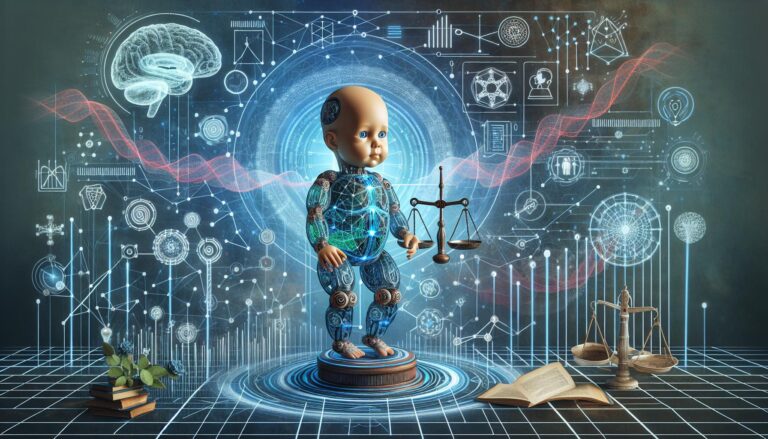Maximizing the Potential of ChatGPT: Tips and Best Practices
ChatGPT, or Generative Pre-trained Transformer, is a powerful language model that has the ability to understand and generate human-like text with a high level of accuracy and fluency. Developed by OpenAI, ChatGPT is based on transformer architecture and is trained on a massive dataset of internet text. This makes it particularly useful for a wide range of natural languages processing tasks such as language translation, text generation, and customer service.
As ChatGPT becomes more widely adopted, individuals and organizations must understand and utilize its capabilities to their fullest potential. Organizations can improve their operations and create new opportunities by understanding the technology behind ChatGPT and how to use it effectively. Additionally, by understanding the ethical and societal implications of using ChatGPT, organizations can ensure responsible use and make informed decisions about its implementation.
In this article, we will explore the critical components of ChatGPT and provide tips and best practices for effectively utilizing its capabilities. From selecting and preparing training data to fine-tuning and evaluating the model, we will cover everything you need to know to maximize the potential of ChatGPT.
PowerBrain AI Chat App powered by ChatGPT & GPT-4
Download iOS: AI Chat
Download Android: AI Chat
Read more on our post about ChatGPT Apps & Chat AI App
Understanding ChatGPT
ChatGPT, short for Generative Pre-trained Transformer, is a deep learning model that uses transformer architecture trained on a massive dataset of internet text to generate human-like text. It is designed to understand and develop text with a high level of accuracy and fluency, making it particularly useful for a wide range of natural language processing tasks such as language translation, text generation, and customer service.
The technology behind ChatGPT is based on transformer architecture, which is a type of neural network that uses self-attention mechanisms to understand the context of a sentence. This allows ChatGPT to understand the meaning and intent of a given text prompt and generate a coherent and relevant response. Additionally, ChatGPT uses a technique called unsupervised pre-training. The model is trained on a large text dataset without any specific task in mind, allowing it to learn general language patterns. This pre-training enables the model to be fine-tuned for particular tasks, such as language translation or text generation, by training it on a smaller dataset.
Compared to other language models such as GPT-2, BERT, and ELMO, ChatGPT has several advantages. Firstly, it has the most significant number of parameters, allowing it to generate more coherent and relevant responses. Secondly, it can complete a given text prompt in a more human-like manner. Lastly, it has been trained on a more diverse dataset, allowing it to understand and generate text in a broader range of languages and topics.
Understanding ChatGPT is crucial to utilize its capabilities and potential fully. By understanding the technology behind it, organizations and individuals can use it more effectively and efficiently.
Best Practices for Training Data
The quality and relevance of the training data used to fine-tune ChatGPT is critical to its performance. High-quality, diverse, and relevant training data ensures that the model is able to understand and generate text that is accurate and appropriate for the task at hand.
When selecting training data, it is essential to consider both the diversity and relevance of the data. For example, suppose the goal is to generate text for customer service. In that case, it is important to include a diverse set of customer inquiries and responses to ensure that the model can handle a wide range of situations. It is also important to ensure that the data is relevant to the task or application.
Preparing the training data is also an important step. This includes cleaning and preprocessing the data and ensuring that the data is formatted correctly for the model. It’s also important to consider the size of the dataset, as the more extensive the dataset, the more the model can learn, but it also requires more computational power and time.
On the other hand, using low-quality data can negatively affect the model’s performance. For example, if the data is biased or contains errors, the model may generate inappropriate or offensive text. Additionally, the model’s performance may be limited if the data is diverse and relevant. Therefore, it is crucial to carefully select and prepare the training data to ensure its quality and relevance.
Chat GPT API Powered AI Chatbot for Mobile Apps
Even though Open AI has yet to release an official mobile app, Chat GPT 3 AI Chatbot has been created to fill the void. Our app provides an intricate and robust solution for users needing an automated text generator for any purpose. Whether it be for increasing social media presence, designing website copy, or even writing articles quickly, our AI-powered chatbot is a must-have! With unmatched accuracy and proficiency, there is no better way to take your productivity to the next level. The ChatGPT app can be used for iOS and Android devices, allowing for a seamless and intuitive user experience at any time and from anywhere in the world.
You can now create high-quality content on the go without losing out on accuracy or relevance. With our AI-powered chatbot, your business can benefit from an efficient and powerful way to communicate with customers in real time. Download the app for:
iOS: ChatAI
Android: Chat AI
Fine-Tuning and Evaluation
Fine-tuning ChatGPT for specific tasks is a critical step in maximizing its potential. During the pre-training phase, ChatGPT is exposed to a wide range of text data, allowing it to learn the language’s general patterns. However, performing specific tasks, such as text generation or sentiment analysis, requires additional fine-tuning on a smaller dataset. This allows the model to adjust to the specific characteristics of the task and improve its performance.
Monitoring and evaluating the model’s performance is also an essential step in the process. It allows you to assess the model’s capabilities and identify any issues or limitations. This includes evaluating the model’s accuracy, fluency, and coherence of the generated text. Additionally, it’s essential to evaluate the model’s performance on different datasets to ensure that it’s generalizing well and to evaluate its performance over time, as the model’s performance may change as the data it is trained on changes.
When fine-tuning and evaluating ChatGPT, it’s important to consider the following tips:
- Start with a small dataset and gradually increase it as needed.
- Experiment with different fine-tuning techniques to determine which one works best for the specific task.
- Monitor the model’s performance on an ongoing basis and make adjustments as needed.
- Use evaluation metrics that are relevant to the specific task.
By following these tips and best practices, organizations can effectively fine-tune and evaluate ChatGPT to maximize its potential and ensure that it performs well on a specific task.
Real-World Applications
ChatGPT has a wide range of real-world applications in various industries. One of the primary ways it is being used is in natural languages processing tasks, such as language translation, text summarization, and sentiment analysis. It can also generate human-like text, making it an ideal text generation and creation tool. Another popular application of ChatGPT is in customer service, where it can be used to create AI-powered chatbots that can understand and respond to customers’ inquiries and commands human-likely.
Several companies and organizations are already using ChatGPT in their operations. For example, OpenAI has developed a product called “GPT-3 Playground,” which allows organizations to test and experiment with the capabilities of ChatGPT. In addition, other companies, such as Microsoft, Appen, and Replika AI, have integrated ChatGPT into their products and services.
The potential for future applications of ChatGPT is vast. It has the ability to understand and generate human-like text, which opens up a wide range of possibilities for its use in industries such as healthcare, finance, and retail. Additionally, ChatGPT can be used to create AI-powered virtual assistants, language tutors, and even personal assistants that can carry out tasks and make decisions on behalf of users. The possibilities are endless, and the future holds great potential for ChatGPT to shape the way we interact with machines and technology.
Ethical and Societal Implications
As ChatGPT becomes more widely adopted, it’s important to consider the ethical and societal implications of using such a powerful technology. One of the main concerns is the potential for job displacement, as ChatGPT can automate tasks that humans previously did. Another concern is the potential for bias, as the model is trained on internet text, which may contain biases and stereotypes. Additionally, the model may generate text that is not appropriate or offensive, which can lead to negative consequences such as spreading misinformation or even causing harm.
Responsible use and ethical considerations are crucial when implementing ChatGPT. This includes monitoring the model’s output and addressing any issues that arise. It also includes developing policies and procedures to ensure that the model is used in a way that is aligned with ethical principles and values. Additionally, organizations should consider the potential consequences of using ChatGPT and take steps to mitigate any negative impacts.
Guidance for addressing ethical concerns includes:
- Regularly monitor the model’s output and address any issues that arise
- Develop policies and procedures for responsible use
- Consider the potential consequences of using ChatGPT and take steps to mitigate negative impacts
- Involve stakeholders such as employees, customers, and the community in the decision-making process
- Stay informed about the latest research and developments in the field of AI ethics
By understanding and addressing the ethical and societal implications of ChatGPT, organizations can ensure that the technology is used responsibly and in a way that benefits society as a whole.
Conclusion
In this article, we have discussed the key components of ChatGPT. This powerful language model has the ability to understand and generate human-like text with a high level of accuracy and fluency. In addition, we have highlighted the importance of understanding and utilizing its capabilities, including best practices for training data, fine-tuning and evaluation, real-world applications, and ethical and societal implications.
We have discussed the importance of providing high-quality, diverse, and relevant training data, fine-tuning the model for the specific task, monitoring and evaluating the model’s performance, and understanding the ethical and societal implications of using ChatGPT. Additionally, we have provided examples of companies and organizations already using ChatGPT in their operations and explored the potential for future applications.
In conclusion, ChatGPT is a powerful tool that has the potential to revolutionize the way we interact with machines. We encourage readers to explore ChatGPT and its capabilities for themselves and to consider how it can be used in their own organizations or projects. By understanding and implementing the tips and best practices discussed in this article, organizations can effectively utilize ChatGPT’s capabilities and maximize their potential.
















